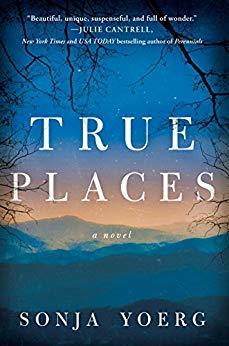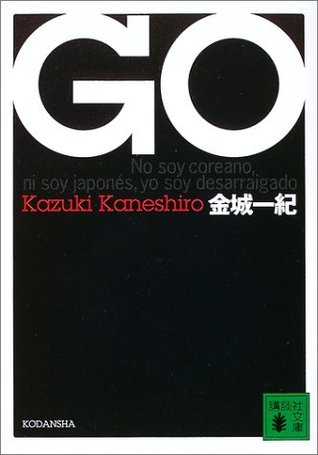In 2018 I read 44 books. Seventy-seven percent of the books were fiction, 23% were non-fiction. Of the novels, 10 were mysteries, 10 were fantasy, 9 were contemporary fiction, 3 were young adult and 2 were science fiction, Of the non-fiction books, 4 were biographies and memoirs. Eighty-five percent of the books I read were e-books, 15% were physical books.
Here are the 10 best books I read in 2018.
10. True Places by Sonja Yoerg.
An excellent contemporary novel set in Virginia. The story is told from the point of view of various family members including a mother, father, brother and sister. The world of this family is shattered by Suzanne, the mother, discovering a starved young girl, Iris, at the edge of the road. Suzanne takes Iris to hospital and when she recovers into the family home. This simple act of kindness challenges the family to evaluate their relationships with each other.
9. Go by Kazuki Kanishiro
I did find the action to be very predictable. I guessed a key event long before it happened. About a third of the way through the novel, I made the mistake of reading a few of the reviews. One mentioned how the physical details of India were inaccurate. Having never been there, I could not judge for myself, but the review colored my reading of the book. I began to question if the author had ever been there.
Even if the physical details are not accurate, the emotional power of the story makes it worth reading. If you enjoy love stories, you will enjoy this book.
7. Banana Rose by Natalie Goldberg

In many of her books on writing, Goldberg talks about the importance of detail in writing. And she practices what she preaches in this her only novel. She builds the story through attention to detail. I know some people have been disappointed with this book. I was not. I think she did a great job of telling the story. I liked the character of Banana Rose.
Not much happens in the story. We move from one day in Banana Rose's life to the next. The book is framed by the death of a friend. Goldberg discusses the writing of Banana Rose in the book, Wild Mind. She admits that the main criticism of her editor is that the book has no plot. In the rewrite, she added a slight plot, but don't expect great movement.
If you choose to read this book, go slow and absorb the details. The enjoyment is in the details. And read Wild Mind along side it.
5. The Man Who Cried I Am by John A. Williams
 Growing up in a small farming community in central Illinois in the 1960's, I had little access to bookstores. The closest was 25 miles away in Peoria. Since I was dependent on our small local library and our church library for books, I subscribed to the Doubleday Book Club. One of the books I bought through the club was The Man Who Cried I Am. I cannot remember if I read it, but I am sure that I probably did not fully grasp the meaning of the book given my small town upbringing.
Growing up in a small farming community in central Illinois in the 1960's, I had little access to bookstores. The closest was 25 miles away in Peoria. Since I was dependent on our small local library and our church library for books, I subscribed to the Doubleday Book Club. One of the books I bought through the club was The Man Who Cried I Am. I cannot remember if I read it, but I am sure that I probably did not fully grasp the meaning of the book given my small town upbringing.
Somewhere over the years I gave the book away. I purchased the ebook a few weeks ago and was surprised to find the introduction by Walter Mosley, one of my favorite writers. Written in the 1960's, the novel tells the story of a black writer during the last three days of his life. Max Reddick, who is dying of cancer, is in Europe for the funeral of a fellow writer. The book is filled with memories of his life in the 1940's, 1950's and 1960's, including the women he loved, the people he knew and the challenges he faced living in the United States and Europe as a black man. The book skips back and forth in time and the reader must play close attention because there is no warning that a time shift has occurred.
While the world has changed a lot in the last 50 years, much of it remains the same. The hearts of people are still corrupt, mean-spirited and violent. The forces that assassinated Kennedy and King are still with us. Now crazy people kill young children. Racism and violence are still with us.
This book should be read by all who have trouble understanding what it means to be a minority in the United States and by those who fail to understand what is behind the Black Lives Matter movement.
4. Bud, Not Buddy by Christopher Paul Curtis
My ten-year-old daughter read it in school so she read it to me. This is an amazing novel that parents should read with their children.
3. The Accidental President: Harry Truman and the Four Months that Changed the World by A. J. Baime

Years ago a workshop facilitator asked the group I was in: "Who was president when you were born?" I like most of the people in the class had no idea. The thought had never occurred to me. When I discovered it was Harry S. Truman, I began to read books, eight in all, about him including the comprehensive Truman by David McCullough. I have even read the boring Meeting at Potsdam by Charles Mee. I was not expecting to learn anything new about Truman and was surprised when I did.
The Accidental President is a surprisingly exciting book to read. Baime takes the reader through the first four months of Truman's presidency. He faced challenges that few, if any, presidents have faced upon taking office. The U.S. was fighting a war on two fronts in Europe and in Asia. He was thrown into negotiations with two savvy politicians, Churchill and Stalin, over the fate of Europe. He learned about the development of the atomic bomb and had to make a decision about whether to drop the bomb or not.
People often say that Truman was unprepared to be President. He had only been in the Senate for two terms. Truman was never in Roosevelt's inner circle and Roosevelt kept him in the dark after he was elected Vice-President in 1944. He became President with little knowledge of what was transpiring in the international arena. Yet, Truman was prepared in several ways. He was a student of history and what other leaders had done in difficult situations. He was a decision-maker and did not hesitate to make the difficult decisions. He had a natural instinct for politics. He also had a strong moral character, yet knew when to compromise.
Baime opens the book by taking us through the day when Roosevelt died and Truman stepped into his shoes. He follows this up with a section that shares to story of who Truman was and where he came from. Even in this section, I learned somethings about Truman that I was unaware of. Baime then proceeds to walk us through the riveting first four months of Truman's presidency and the challenges he faced.
I highly recommend this book to anyone in business who finds himself in the midst of a crisis. I also recommend the book to anyone interested in politics, history and the presidency.
2. The Golem and the Jinni by Helene Wecker
The Golem and the Jinni is a great first novel by Helene Wecker. Set in New York City in the early 1900s, the novel combines the mythology of both the Jewish and Arabian worlds with the real world of recent immigrants to the United States. Wecker has done her research on historical New York and the immigrant cultures portrayed. The book took seven years to write. At its heart, this novel is love story with ups and downs and barriers to overcome. Can mythical creatures from two different worlds find happiness together? Be sure to put this book on your reading list.
I have read five of Sujata Massey's books prior to reading The Widows of Malabar Hill. Four of those books involved Rei Shimura, a half American, half Japanese antiques dealer and set either in Japan or America. My favorite was The Kizuna Coast set in Japan after the real-life tsunami. Sujata was born in England to parents from India and Germany, and was raised mostly in St. Paul, MN.
I have also read India Gray, a collection of short stories involving characters from India. My favorite short story, Outnumbered at Oxford, introduces Perveen Mistry in England. I could not wait to meet Perveen again in The Widows of Malabar Hill. And I was not disappointed. This novel is rich in historical detail. The novelist fills in what happened to Perveen prior to traveling to England to study law and what happened after she returned.
Perveen's family had migrated from Iran to India where they are a small religious minority (Zoarastrian). Perveen becomes the first woman in India to practice law. Her character is inspired by real life women who became the first female lawyers in India.
I highly recommend this mystery novel for its rich historical detail and its powerful female character.







